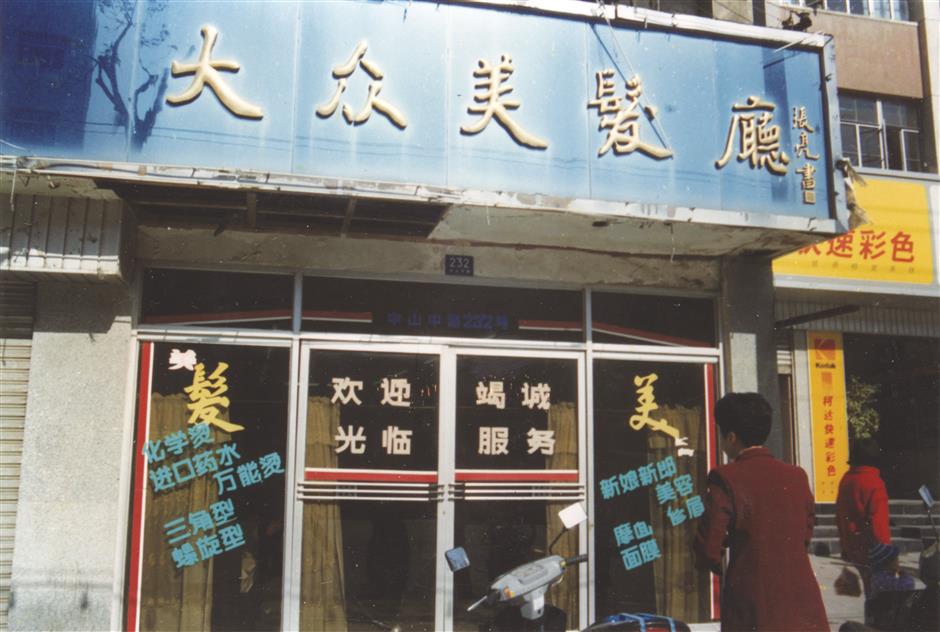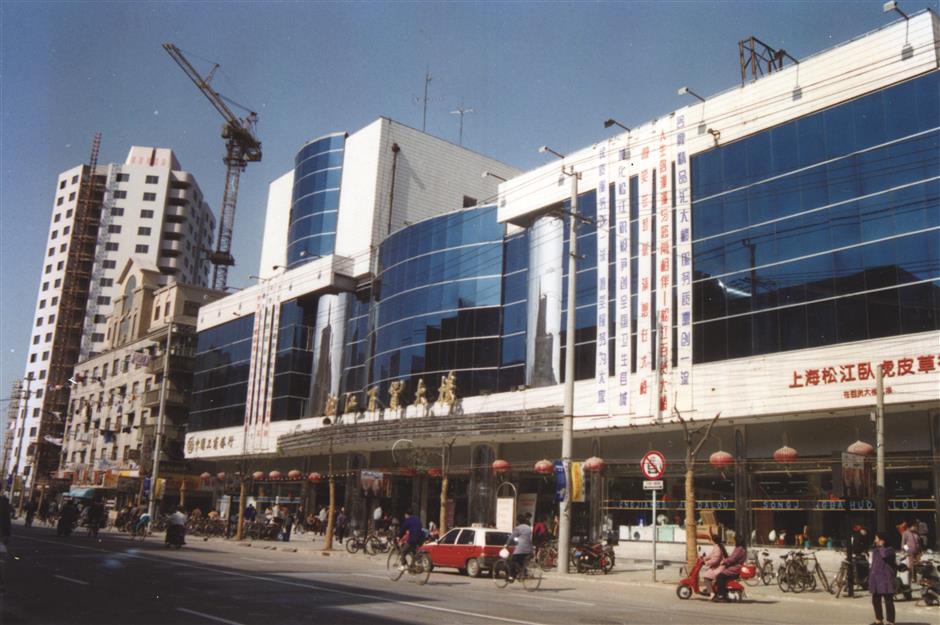From just one shopping street decades ago to today’s malls and plazas, Songjiang District’s retail industry has been going at full speed over the past 40 years of China’s reform and opening-up policy.
In the days of the planned economy when the country suffered shortages, everything was rationed and bought with coupons. “We had coupons for egg, cloth, candy and almost anything,” recalled Chen Shijun, director of the Songjiang Supply and Marketing Cooperative Association and general manager of the district’s business development group.
After 1978, when the policy was launched, the economy was diversifying — private business was encouraged and state-owned enterprises went through a reshuffle to go with the market-oriented economy.
In Songjiang, privately run businesses and self-employers were springing up, offering people more flexible shopping options.
Many older Songjiang locals will recall Zhongshan Road M. as the business center and downtown area with most shops during the 1980s. A Sunday could be spent on the road — getting lost among the dazzling items at the No. 1 Department Store, choosing some fancy cloth at the New Time Cotton Shop for a new dress, enjoying a cup of green tea at Yeshiyuan Tea House and having a new haircut at the Dazhong Barbershop.

Dazhong Barbershop
During the 1990s, along with the renovation of Songjiang’s old downtown areas, local people’s shopping experience was upgraded at the same time.
In 1994, the cooperative association invested 200 million yuan (US$29.3 million) to build the Songjiang Shopping Center and Yunjian Shopping Mall, soon to become two a-la-mode landmarks equipped with LED screens, air conditioning and heating systems, elevators and computer payment. It even opened at night and had a cafeteria and children’s zone, a total “wow” factor in Songjiang and even in Shanghai at the time.
Meanwhile, the Zhongshan Road M. was undergoing a facelift. In 1996 when the project was completed, the road was transformed into a modern, chic commercial street with branch stores of the city’s time-honored brands such as the No. 6 Shanghai Department Store, Jinjiang Hotel, Laomiao Gold & Jewelry, Xinghualou Snack and many others, to emerge as a milestone in the history of Songjiang’s retail industry.

Songjiang Shopping Center
The new century
When the 21st century arrived, shopping plazas blossomed and chain stores, supermarkets and convenience shops mushroomed, making it easier for locals to buy what they wanted — from daily necessities to fresh food, from household appliances to home decorating materials, from fashion wear to jewelry.
In 2005, with the establishment of the New Songjiang City, mega shopping complexes appeared at many towns and communities.
Kaiyuan Med shopping mall, the first large project in Songjiang, broke the stereotype of shopping and brought a new interactive experience for local residents.
Shopping was not merely buying things for Songjiang locals, but an entertainment that included dining, recreation, education and tourism.
“Songjiang was the first stop for Kaiyuan Group in Shanghai,” said general manger Chen Hanghua. “I remembered the New City’s north was still a barren land 18 years ago, but now it’s a new downtown and entertainment destination.”
In 2014, Wanda Plaza, covering an area of more than 90,000 square meters, was opened. The project, a combination of a shopping center, office building, SOHO apartment and hotel, became a monolith among Songjiang’s retailers and it achieved sales revenue of almost 800 million yuan that year.
After 40 years of development, Songjiang’s retailing map was outlined by the big three brothers — the Zhongshan Road in the old downtown area, Kaiyuan Med shopping mall in the Songjiang New City and Wanda Plaza in Xincheng International Central Business District, while a wide variety of shopping centers are on the way in Jiuting, Xinqiao and Sijing towns.
“When I was a girl, money couldn’t buy things,” said Shen Lifang, 55, living in the Fangsong Community. “But with the reform and opening-up policy, life started to change gradually. We could buy what we wanted freely. What’s most amazing today is that I can pay with mobile phone without taking out my wallet. It’s just unimaginable.”

Today's modern shopping plaza
